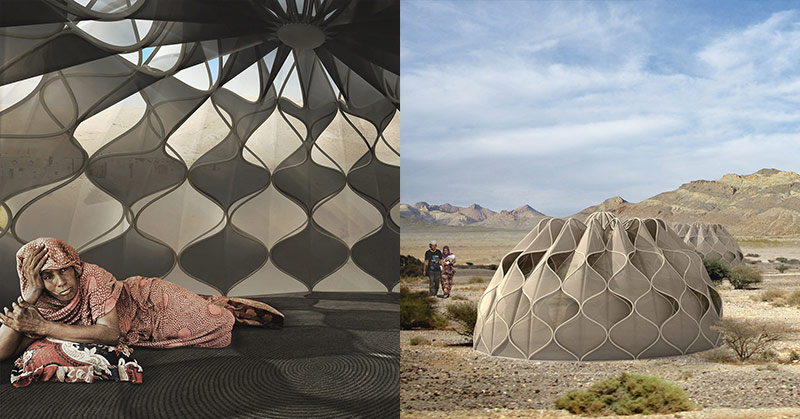The refugee crisis is all over the news, but the suffering is not over. The underlying cause of families abandoning their homes to seek shelter in safer territory, the wars, and poverty, have not been resolved.
Refugee camps are set up to provide temporary accommodation for those who are forced to leave their homes because of the persecution and violence, but all is not well as their funding becomes uncertain for future years.
In many of these camps, the enormous number of refugees are stuck dwelling in unlivable shelters like trailers and tents. These people are stuck in limbo between the horrors they’ve left behind, such as the fear of being shot if they left their homes, and the chaos they live in before they find asylum in another country.
Families have lived like this for years. Professionals, doctors, farmers, shop owners, left their jobs behind and have no meaningful way to continue to provide for their families or to secure a proper roof over their heads. Available jobs grossly underpay their workers, leaving them in debt to their landlords and shopkeepers; even children as young as eight are forced to work to help their families. [1]
Some refugees wonder about journeying back home, that is, if there is still a home to return to. Some have made the trip.
“What are my choices now for me and my family… it’s the bad here or the worst in Syria,” said Ahmed Slabi, 45, father of five. “The local residents of Arsal have been kind to us, they welcomed us and helped us when we needed it most… but as their community struggles themselves, inevitably, they grow tired of our presence and we are now tired of being here.”
Paddy Dowling, a photojournalist, reported on the ongoing crisis in the Independent from his experience visiting refugee camps in Lebanon. He asks the question: “Has the world just grown tired of the Syrian Refugee Crisis now in its eighth year?” [2]
Abeer Seikaly: A Designer for the Future
One woman has not grown tired.
Abeer Seikaly is a Palestinian Jordanian architect, designer, and artist, who believes that “expressing architecture as a social technology has the power to redefine how we engage with and within space.” Her work challenges the notions of identity, materiality, women, and time.
“I have a vision of communities empowered to cultivate their own wellbeing and dignity; inspiring practical living spaces in synergy with nature,” she states on her website. [3]
Weaving a Home
Seikaly has designed an emergency shelter called “Weaving a Home” that received the Lexus Design Award in 2013. It’s a tent with a collapsible structural fabric that can adapt to different climates, and provide comforts such as heat, running water, and electricity.
The shelter is built from a high-strength plastic tubing that has been molded into sine-wave curves to expand and contract for easy mobility. Because the structure is cell-like, individual parts of the system can be opened to create doorways, windows to improve circulation, or kept closed in the winter.
The plastic tubing in the shelter allows electricity and water to be accessed by its occupants to shower and power technological devices. Seikaly envisions a fabric to collect solar energy, and the water storage tank is built on the top of the dome to collect rainwater or be filled from a nearby source. This provides running water that can be heated by the sun. [4]
Seikaly writes in her description of the project: “Refugees carry from their homes what they can and resettle in unknown lands, often starting with nothing but a tent to call home… In this space, the refugees find a place to pause from their turbulent worlds, a place to weave the tapestry of their new lives.” [5]
Her goal was to rebuild the feelings of home and social security for those going through a disaster. The structure should not just be an adequate living space but “a dignified one.”
She spoke to refugees about their struggles with collapsing tents, sanitation, and heating water. “It was clear this temporary home was becoming permanent,” she said in her TEDTalk.
She imagined the rows of collapsing tents as a prototype in a government office. “…Is this the best that we could do?” she added emotionally. “Is there a solution where the tent could become more than a shelter, where it could become a home, a community?” [6]
Weaving a Home is still under development, but the design gives hope to those who will be able to benefit from it in the future.
Seikaly has also one the Rug Company’s Middle East Wallhanging Design Competition in 2012, co-founded and co-directed Amman Design Week in 2015, and established a cultural experience and residency program based in Amman in 2018. She is a frequent speaker, panelist, and a brilliant mind that is sure to mold the world’s future for the better. [3]
Sources
- Kevin Sullivan. The Voices. The Washington Post https://www.washingtonpost.com/sf/syrian-refugees/story/refuge/
- Paddy Dowling. ‘We can’t survive like this’: Life in the camps for Syria’s refugee children. Independent. https://www.independent.co.uk/news/world/syria-refugee-crisis-lebanon-child-forced-labour-in-photos-a8777191.html February 16, 2019
- Abeer Seikaly. About. https://abeerseikaly.com/about/
- Abeer Seikaly. Is architecture a social technology? https://abeerseikaly.com/is-architecture-a-social-technology/
- David Douglass-Jaimes. Abeer Seikaly’s Structural Fabric Shelters Weave Refugees’ Lives Back Together. ArchDaily. https://www.archdaily.com/778743/abeer-seikalys-structural-fabric-shelters-weave-refugees-lives-back-together December 19, 2015
- Abeer Seikaly. Making Your Home, Wherever You Are | Abeer Seikaly | TEDxKlagenfurt. TEDx Talks. https://www.youtube.com/watch?v=tYFzy1_EmBM October 5, 2018

